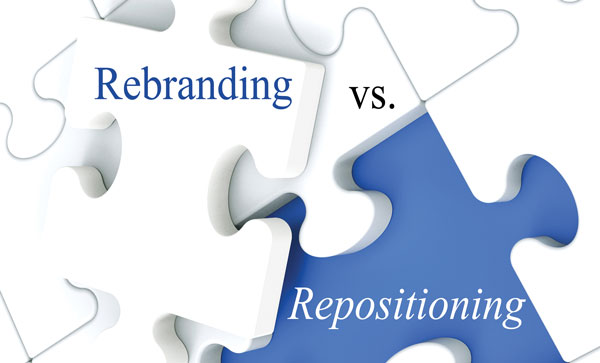Rebranding vs. Repositioning
by BusinessWoman magazine / 0 Comments / 1175 View / February 17, 2015
The right branding strategy makes all the difference.
As companies grow, product lines expand, and market conditions change, business owners often find themselves with a company brand image that no longer reflects who they are or what they do. Perhaps they started in a niche market, or with a very specific product, and built their entire company identity around it—and the business now serves a different, bigger, or more diverse customer base.
What to Do?
A sure symptom of this brand misalignment is the constant need to explain or clarify what the company really does. Or when an owner pines, “We’re more than just (fill in the service or product category).” At this point, a new brand strategy is obviously in order, but it begs the question, “Do I need to reposition my company or completely rebrand it?”
Reposition if the company name is right but the message and/or image is wrong
Repositioning a company makes sense when the company brand name is well established and not in any way misleading. In other words, it’s not so much an issue with the identity as it is with the image and reputation.
Apple expanded beyond its original core product line of computers, but that didn’t require a change in their name. They simply dropped the word “computers” and shifted the message to “Think Different.” They no longer position their brand as a “computer company” but more as a cool, digital-lifestyle provider.
Dale Jarrett Racing Adventure felt restricted by their brand image as strictly a racing school. It affected their approach to advertising, marketing, and product development. After carefully determining their core value proposition, they reemerged with the tag line, “Full Throttle Living!”
The emphasis shifted from the cars to the actual experience. And that experience has since been expanded to include World War II reenactments and real firefighting drills. They now position themselves as a lifetime adventure company that simulates a day in the life of an adrenaline-charged professional. That’s a big departure from a racing school, and that’s the power of repositioning.
Old Spice has made a concerted effort to reposition its brand from a stodgy aftershave product line to a cool, contemporary array of “fragrant man goods.” Thanks to its viral video marketing, a whole new audience has embraced this once old-school cologne.
Rebrand if your company name causes confusion
Rebranding comes into play when the original company identity has grown outdated, confusing, or outright misleading. The owners and staff can all agree on the brand’s current position and message, but the customer can’t get past the name itself.
CompUSA struggles to brand itself as more than just computers. Radio Shack remains mentally tethered to an old technology and a dilapidated building. Burlington Coat Factory sells more than just coats. At some point, the cost of clarifying a brand becomes such a drag coefficient that it makes more sense to start with a clean slate.
Would 3M be recognized as a global leader in innovation if it had remained The Minnesota Mining & Manufacturing Company? Popular consumer electronics company LG rebranded twice, from the original legacy name of Lak-Hui Chemical Industrial Corporation to Lucky Goldstar, and in 1995 to their current moniker of LG with the tag line, “Life’s Good.”
Kentucky Fried Chicken rebranded to KFC to simplify their brand image and deemphasize the fried aspects of their foods. They are now able to offer grilled chicken without an apparent contradiction in the name.
Rebranding eliminates the need to spend valuable ad dollars declaring: “We’re more than what we say we are!” And in this economy, that might save even more than money—it might just save the business.
Repositioning and rebranding keep a company current, relevant, and profitable
Both repositioning and rebranding serve the goal of greater brand clarity. Repositioning highlights a company’s emerging role and redefines its new territory in the marketplace (often while keeping the legacy name in place, e.g., Apple).
Rebranding addresses the outward-facing identity of the company, typically the name and visual components, and helps to alleviate and/or correct misconceptions about the direction of the business (e.g., 3M and KFC).
Both rebranding and repositioning offer unique and specific benefits when applied correctly. Clarifying the brand identity and market position allows potential customers to place the company in the right mental “box” for easy and accurate recall.
This type of intuitive branding reduces customer confusion, improves bottom-line performance, and positions your company for continued success. With careful consideration, rebranding and repositioning will have your customers remembering and revisiting you more often. BW
With more than 250 brands names to his credit, Phillip Davis heads Tungsten Branding, a company-naming firm based in western North Carolina. For more info, visit www.TungstenBranding.com.


Your Commment
You must be logged in to post a comment.